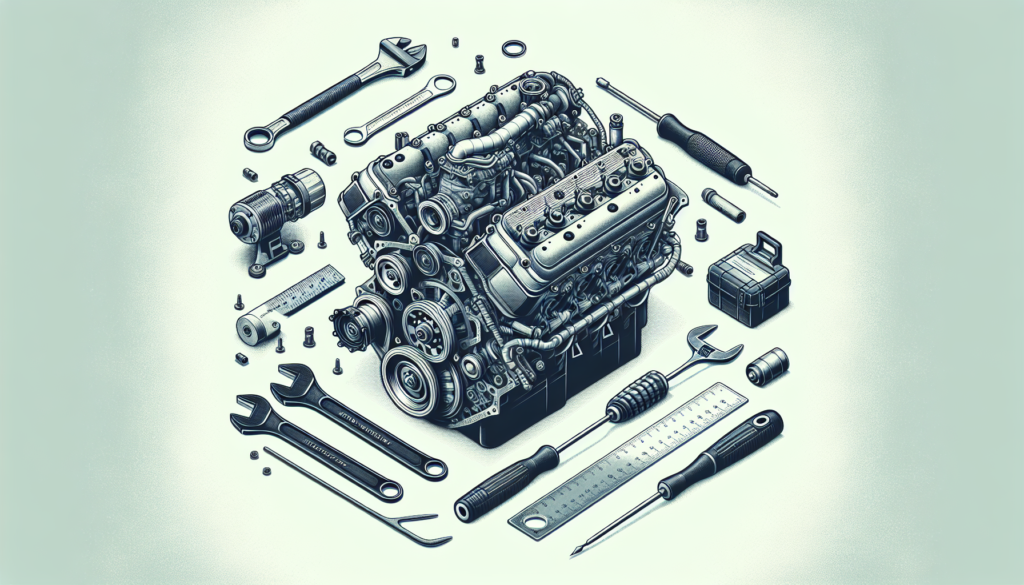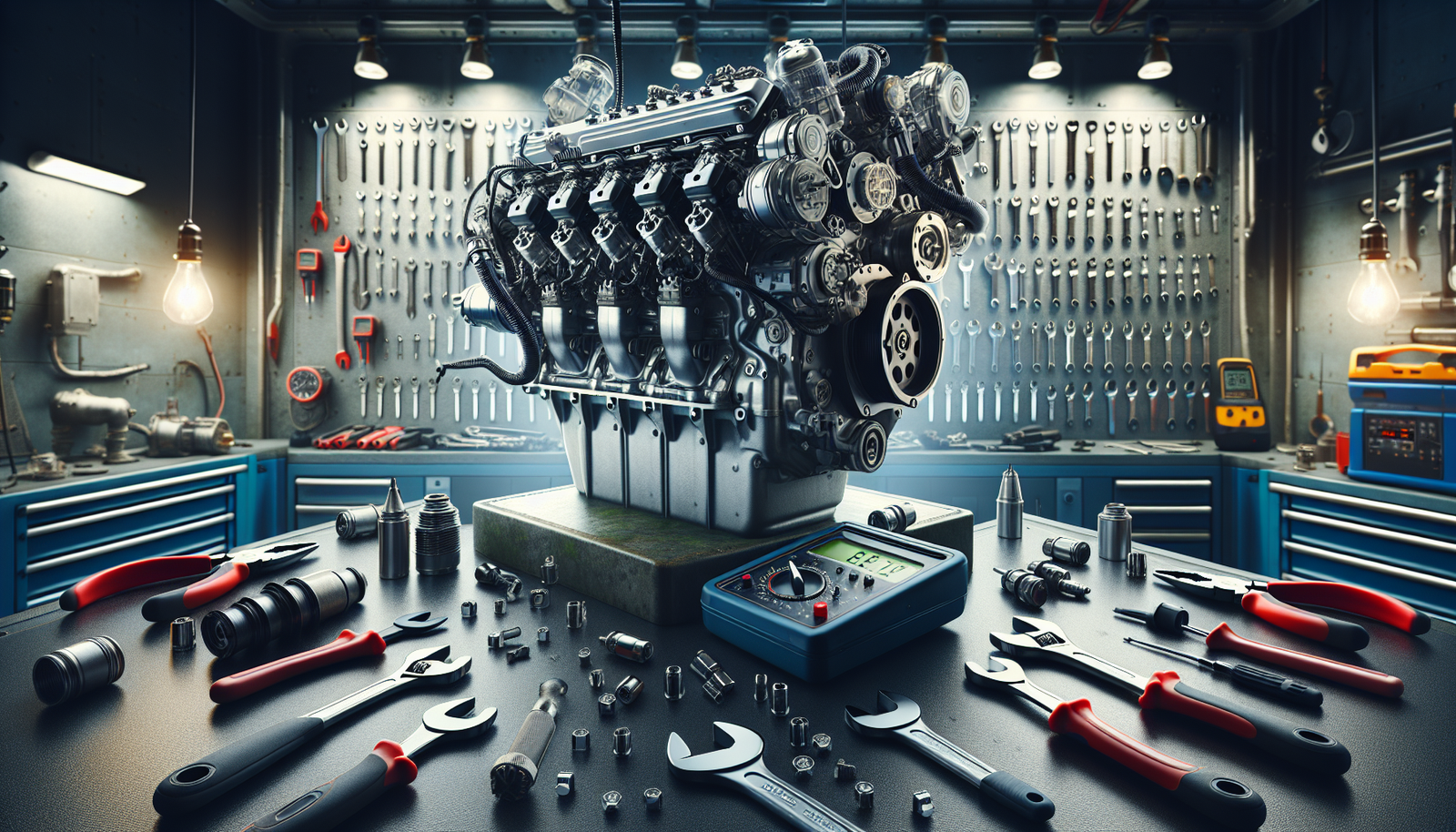Sailing across the tranquil sea becomes quite troublesome when your trusty boat engine does not operate properly. When it starts running either lean or rich, it could give you a serious headache. However, don’t you worry! This well-articulated guide titled “How To Detect And Fix A Lean Or Rich Running Boat Engine” is exactly what you need. It will walk you through the steps needed to identify these issues in your boat engine and give you practical solutions to set them right. Whether you’re a nautical novice or an old sea-dog, this straightforward walk-through is your lifeline to serene sailing and uninterrupted boat rides. So, let’s set sail and navigate your way towards smooth engine operations!

Understanding Lean and Rich Running Conditions
As an enthusiast of boats and their engines, diving into the subject of engine conditions is important. To start, let’s look at running conditions; namely lean and rich running conditions.
Definition of Lean Running Condition
A lean running condition occurs when the air-fuel mixture in your boat engine is comprised of much more air than fuel. It’s like running your body on an empty stomach – there’s not enough fuel to power it efficiently.
Definition of Rich Running Condition
On the contrary, a rich running condition refers to the situation when the air-fuel mixture has an excess amount of fuel compared to air. It’s like overloading your body with food; technically you have the energy needed, but it’s tough to utilize it efficiently.
Implications of Lean and Rich Running
Both lean and rich conditions can cause problems for your boat engine. Lean running can cause overheating, and may lead to internal damage over time. On the other hand, rich running can result in poor gas mileage, fouled spark plugs, and sluggish engine performance. This will cost you both in fuel economy and possibly engine repairs.
Detecting Lean or Rich Running Conditions in Boat Engines
Identifying whether your engine is running lean or rich is the first step to resolving the issue.
Physical Signs of Lean or Rich Running
The physical signs are usually pretty noticeable. For instance, if your engine is lean, you might notice it running hotter than usual. On the other hand, an engine that is running rich may produce excessive smoke from the exhaust.
Sound Indicators for Lean or Rich Running
Your ears can also help you diagnose the state of your engine. An engine running lean may produce a pinging or knocking sound, while an engine running rich will likely be louder than normal and sound bogged down.
Performance Indications of Lean or Rich Running
Finally, consider the overall performance of your boat. If you’re dealing with a lean engine, you may find it hard to start and notice a loss of power, especially at high speeds. On the other hand, a rich-running engine might not respond well to acceleration, appearing sluggish.
Basic Checks for a Lean or Rich Running Engine
Before reaching out to a professional, there are several things you can check yourself.
Checking the Fuel Line
The first step is to inspect the fuel line. Ensure it’s not damaged and that there are no blockages preventing the flow of fuel.
Examining the Carburetor
Next, take a look at the carburetor. See if it’s dirty or gummed up with old fuel. If so, a good cleaning may alleviate the problem.
Inspecting the Air Filter
Lastly, check the air filter. A dirty or clogged filter can disrupt the air-fuel mixture, causing lean or rich running conditions.

Tool-Assisted Diagnosis of Lean or Rich Running
Some tools are handy in diagnosing lean or rich running conditions, including a vacuum gauge, O2 sensor, and spark plug analysis.
How to Use a Vacuum Gauge
A vacuum gauge can help you determine whether the fuel system is operating correctly. If it indicates a vacuum, this could mean your engine is running lean.
Understanding O2 Sensor Readouts
An O2 or oxygen sensor measures the amount of oxygen in the exhaust. This information can help you assess if your engine is running rich or lean.
Role of Spark Plug Analysis
Analyzing the condition of your spark plugs can also shed light on the situation. A spark plug that’s wet with fuel may indicate a rich running condition, while a white, crusty spark plug indicates a lean condition.
Salient Features of a Troublesome Boat Engine
Understanding the signs of a troubled boat engine is crucial.
Excessive Fuel Consumption
One of the significant indicators is excessive fuel consumption. If your boat is guzzling fuel, it may be running rich.
Unusual and Excessive Exhaust
Excessive exhaust smoke or unusual smells could mean your boat is producing too much unburned fuel and is therefore running rich.
Decreased Boat Performance
Poor performance, such as decreased speed or power, could be symptomatic of either a lean or rich running condition.
Fixing a Lean Running Boat Engine
If you’ve determined your engine is running lean, there are a few steps to tackle this issue.
Regulating the Fuel Mixture
The first step involves balancing your fuel-air mix by adjusting the carburetor’s idle screw or the fuel injection system.
Using Fuel Injection Cleaner
A fuel injection cleaner can help clean and free up any blockages in your fuel injectors, ensuring a smoother flow of fuel.
Servicing or Replacing the Carburetor
If your carburetor is responsible for the lean condition, it may require a thorough servicing or even replacement.
Fixing a Rich Running Boat Engine
On the other hand, if your boat engine is running rich, the following steps may help.
Adjusting the Fuel Mixture
Again, regulating the fuel-air mixture could help alleviate a rich condition. This involves adjusting the carburetor or fuel injection system to decrease the amount of fuel entering the system.
Checking for Fuel Leaks
Fuel leaks, big or small, can contribute to a rich running condition. Thus, a thorough inspection for any leaks can be beneficial.
Replacing Faulty Sensors
Faulty sensors, often the O2 sensor, can cause your engine to run rich. Replacing these can rectify the problem.
Preventive Measures to Avoid Lean and Rich Running
Prevention is better than cure. To avoid dealing with lean or rich conditions at all, consider these preventive measures.
Routine Engine Maintenance
Regular engine check-ups and maintenance can ensure that your engine stays in peak condition and prevent lean or rich running conditions.
Regular Fuel Quality Check
Regularly check your fuel for impurities and ensure that it’s stored correctly. Poor quality fuel can lead to engine problems.
Timely Replacement of Filters and Spark Plugs
Don’t skip on replacing filters and spark plugs when necessary. These components can impact your engine’s operation significantly.
The Role of a Professional Mechanic
Although there’s a lot you can do on your own, there’s also a time when you might need to consult a professional mechanic.
When to Consult a Professional
If despite your best efforts, your engine continues to run lean or rich, it’s time to take it to a professional. They have the expertise to diagnose and fix complex engine problems.
Benefit of Professional Diagnosis and Repair
A professional can accurately diagnose and efficiently repair your engine. This peace of mind can be well worth the extra cost.
Cost versus Benefits of Professional Engine Service
Although the upfront cost may seem high, consider the long-term benefits. A well-maintained, efficiently-running engine can save you money on fuel and avoid costly future repairs.
Understanding Engine Tuning and Adjustment
Knowledge of engine tuning and adjustment can go a long way towards maintaining your boat motor.
Basics of Engine Tuning
Tuning an engine effectively adjusts the air-fuel mixture to ensure optimal power and fuel efficiency. This can be as simple as tweaking the carburetor’s adjustments or as complex as reprogramming a modern fuel injection system.
Achieving Optimum Air-Fuel Ratio
An ideal air-fuel ratio will lead to efficient fuel combustion and consequently, better boat performance. Striving for this balance should be your goal when tuning your engine.
Impact of Tuning on Engine Performance and Efficiency
Properly tuned engines translate into improved performance, increased fuel economy, and decreased emissions. This contributes to a better boating experience and a healthier environment.
The journey towards efficient boat engine performance can seem daunting. However, with an understanding of lean and rich running conditions, and knowing how to detect and address them, you’re better equipped to keep your boat running at its peak. So, keep learning, practicing, and enjoying your time on the water!

